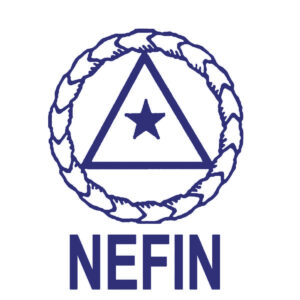
Thailand
The Thai consortium of organizations convened by the Indigenous Peoples’ Foundation for Education and Environment (IPF) works to promote Indigenous ...

In the Annapurna Area of Nepal, NEFIN aims to strengthen Indigenous Peoples and Local Communities (IPs and LCs) governance structures, preserve cultural sites, and raise awareness on the importance of the contributions of IPs and LCs to conservation and to generating global environmental benefits.
Under this initiative, ICI aims to improve the management of 381,450 hectares in Nepal, engaging 25,000 direct project stakeholders.
Conduct training on environment and social safeguards, understanding the rights of Indigenous peoples, FPIC processes, and how rights need to be advocated both nationally and internationally to ensure these safeguards are in place to protect their knowledge, traditions, practices and not displace them in the name of development and conservation Engage in dialogues with national policy-makers on issues of rights to land, territories and resources, its management and climate justice Strengthen IPLCs governance structures including customary ones
Assess drivers of environmental degradation with technical assistance from partners. Local inventory of natural resources and biodiversity Develop local data-management systems Pilot land-use planning in a few sites
Document and disseminate the knowledge of IPLCs and practices on environment conservation, natural resources management and biodiversity conservation
Provide support for the better conservation of the cultural sites or territories with conservation values
Support local government for managing local environmental pollution
Develop IPLC-based green enterprises, providing enterprise management skills and linking them with the private sector while generating local employments
Conduct studies and assessments to further promote PES and/or biodiversity financing mechanisms
Conduct vulnerability assessments, implement nature-and
culture-based solutions
Develop Community-Based Monitoring and Information System (CBMIS) to monitor climate change and its impacts on ecosystems and the effectiveness of nature-based solutions
Identify diversified financial mechanisms, establish benefit-sharing mechanism for ACA revenues, implement measures to enhance economic resilience of IPLCs

Nepal
787,900
120,000
Global Biodiversity Hotspots and High Biodiversity Wilderness Areas:
Himalayas
Key Biodiversity Areas:
Annapurna Area
Important Bird Areas:
Annapurna Area
Protected Areas/ Wildlife Management Areas/etc.:
Annapurna Conservation Area
13%
N/A
The Annapurna Area (AA) in Nepal holds extremely high biodiversity including 1,226 species of flowering plants, 105 mammals, 518 birds, 40 reptiles and 23 amphibians. Within a north-south span of 150 km, Nepal’s altitudinal range varies from 60m-8,848 m above sea level. This divides the country into 5 ecological zones, making it a country with a huge variation in physiographic and climatic conditions and one of the top-ten global biodiversity hotspots. Several features make the Annapurna region unique in the world. It has the world’s deepest river gorge—Kali Gandaki Gorge, which is 3 miles long and 1.5 miles wide, is a valley with fossils from the Tethys Sea dating to 60 million years ago. The region contains the world’s largest rhododendron forest in Ghorepani. Tilicho lake, located in Manang, north of Annapurna massif, is the world’s highest altitude fresh water lake. A forest carbon inventory undertaken in the Chitwan Annapurna Landscape (CHAL) estimated the total carbon stock in the area to be 540.1 million tCO2e, with an average of 725.9 tCO2e per ha.
The Annapurna Area is inhabited by a fairly large population of indigenous peoples, comprising 120,000 residents of different cultural and linguistic groups. Gurung and Magar nationalities are the dominant groups in the south, whereas Thakali, Manange and Baragungle are dominant in the north. The proposed territory of the Annapurna Conservation Area has been managed for nearly three and a half decades under a community stewardship model by the National Trust for Nature Conservation (NTNC), a semi-government agency. The handover of the conservation area to communities was planned for 2012 and then again with the new constitution of Nepal which came into effect in 2015. Devolution of the governance system under the new constitution sparked another demand by the newly formed local rural municipalities to take over the management of the AA in 2018. While disputes and discussions between NTNC, ACAP and the local government were settled, NTNC’s mandate of managing AA through ACAP was further extended for one more year (January 2021) by a decision of the cabinet. NTNC and its ACAP program also envisions that the AA will be transferred to and managed by the Indigenous Peoples and Local Communities through a Council, and the ICI project will support the transfer process and the capacity of Indigenous institutions to take on management of the conservation area.

The Thai consortium of organizations convened by the Indigenous Peoples’ Foundation for Education and Environment (IPF) works to promote Indigenous ...

In the Madre de Dios River basin in Peru, an ancestral tropical forest territory home to several Indigenous communities, the Native Federation of Madr...

In Guatemala and Panama, a consortium of Indigenous organizations led by Sotz’il is working to foster the Indigenous use, management, and conservati...